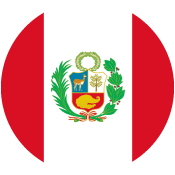The Tax Reform proposed by the National Government, which would be discussed in Congress, significantly changes some aspects that large companies must consider when quantifying the total costs to satisfy their supply chain.
The analysis shows how different recurring elements of large companies go from exempt to taxed, general rates rise and exclusions will be taxed. These new taxes will cause the supply chain to increase its costs in domestic and imported inputs/goods, CAPEX projects, labor and services.
In this article we tell you the main impacts and the most relevant characteristics in each chapter, which are summarized in the following:
1. Income Tax on legal entities
- Rate: The marginal rate on net income up to $500,000,000 would be 27% and income that exceeds that value for 2022 and 2023 would have a rate of 33%
- Discounts Repealed: a) VAT on the acquisition, import and construction of real productive fixed assets b)
- Exempt Income : Exempt income from article 235-2 of the Tax Statute is eliminated. Consolidated legal situations will be respected.
- Investments in Foreign Capital: In the Tax Reform, withholding is reduced from 5% to 0% as of 2022 for profits generated by fixed income and/or public or private financial derivatives.
- Local Investments: The conditions for making the entry into FIC’s or private investments will be modified.
- Digital Marketing: If the beneficiary is a company in Colombia, it would have withholdings of 20%.
2. Sales taxes
- Tax Base: The special tax base of AIU would be repealed for various services: temporary, surveillance, cooperatives and other associated work.
- 3 days without IVA: Most of the requirements and conditions for the 3 days without IVA would be maintained.
- From excluded to taxed: a) Cloud computing and hosting services b) Public Services of strata 4, 5 and 6. c) Commissions for the use of debit and/or credit cards d) Courier services
- From exempt to taxed: Sale of solar panels
- Of taxes from 5% to 19%: a) Storage of agricultural products b) Prepaid and complementary medicine plans.
3. The impact on collaborators – natural persons
- Rate: 2 tables are established where the rate varies from 10% to 41% depending on the taxable income.
- Employee income declaration thresholds: a) In 2022 from $29,000,000 of annual income b) In 2023 from $20,400,000 of annual income.
- Discounts/Deductions Repealed: a) Parafiscal contributions and other payroll contributions in the hiring of those under 28 years of age, women over 40 years of age without work in the last 12 months and employees who earn less than 1.5 minimum wages. b) interest on mortgage loans/ICETEX educational loans c) Health Insurance.
- General Schedule: The percentage of exempt income and deductions is reduced to 25% of the taxable income for the period.
- Dividends: With the Tax Reform the rate would increase to 15%.
- From income that does not constitute income to Taxed: Voluntary contributions to the individual savings regime.
- From exempt to taxed: a) Severance payments and interest b) AFC and voluntary savings c) pensions above $59,000,000 annually.
- Liquid Assets: Natural persons with Liquid Assets from $5,000,000,000 to $15,000,000,000 will have a rate of 1%, from that value the Liquid Assets will be taxed at 2%.
4. Tax Procedure and Other Obligations
- Electronic Billing: a) It is essential that non-labor and capital income be supported by this mechanism. b) The base of those required to invoice is expanded and the value from which an invoice must be issued is $1,090,000 c) The DIAN will determine the official settlement of the tax based on the invoice d)
- Repatriated Resources: For the tax normalization of assets abroad the rate will be 17%, in case of re-investment in the country with a validity of 2 years of said resources the rate would be 8.5%
5. Other general supply chain taxes
- Gasoline and ACPM surcharge: There will be a new tax base setting a value per unit of volume.
- Carbon tax: It is stipulated that more operations would be subject to this tax.
- Tax on single-use plastic: all those used to package, package or package goods. The cost will be $1.82 pesos per gram.
- Pesticides and non-organic tax : There will be a rate of 8% on the final price.
- Tolls: Capital cities may establish tolls within their jurisdiction.




